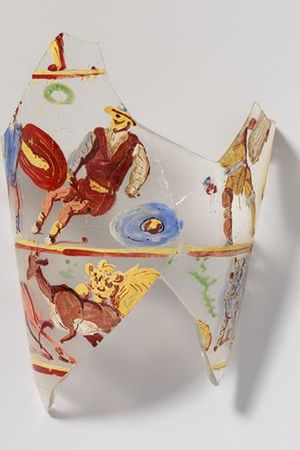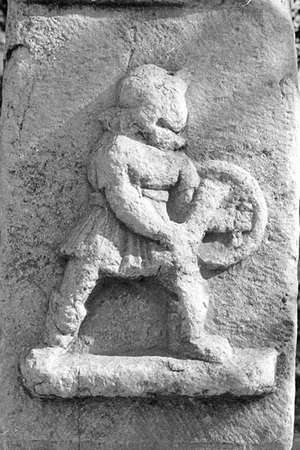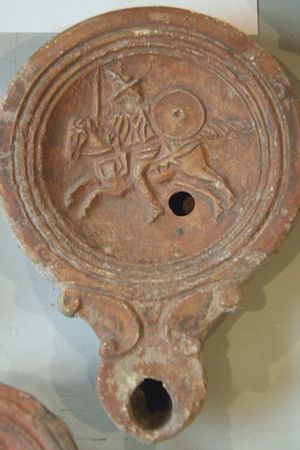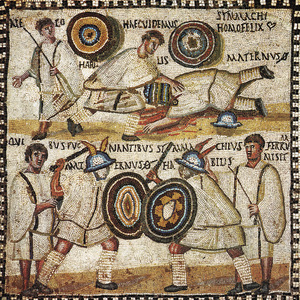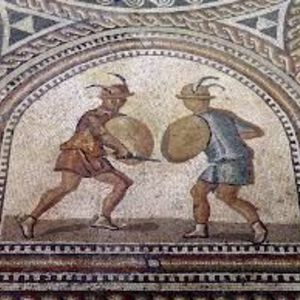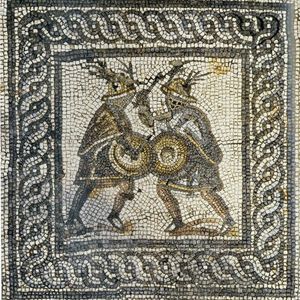Gladiator Equites
Equit (Latin: eques) was an ancient Roman type of gladiator who fought on horseback, armed with a lance, sword, and parma. In literal translation, it means "rider."
The term "eques" was also used to refer to cavalry in the ancient Roman army.
The main distinctive feature of equites is that, unlike most other gladiators who fought shirtless, they wore tunics with a classic gladiator balteus worn over them. The main protective elements for equites were a helmet, which was a hybrid of the provocator and murmillo helmets (lacking a crest, with only feathers on the sides), and a cavalry parma with a diameter of approximately 60 cm. The helmet had broad brims, fully covering the face like other gladiators.
Equites usually opened the gladiatorial fights: they fought in the morning, right after the solemn pompa, preceding the animal hunts, executions of criminals, and battles of foot gladiators. In combat, equites typically first threw their spears, then dismounted and continued the fight on foot. They usually fought against each other.
Equipment
The equipment of an eques included:
During the reconstruction of a fight on a non-sandy surface, it is recommended to use authentic footwear, such as caligae.
Related topics
Gladiator, Helmet, Balteus, Subligaculum, Gladius, Pugio, Murmillon, Tunic, Gasta, Auxiliary-horseman

 Gallery
Gallery






